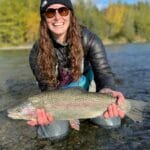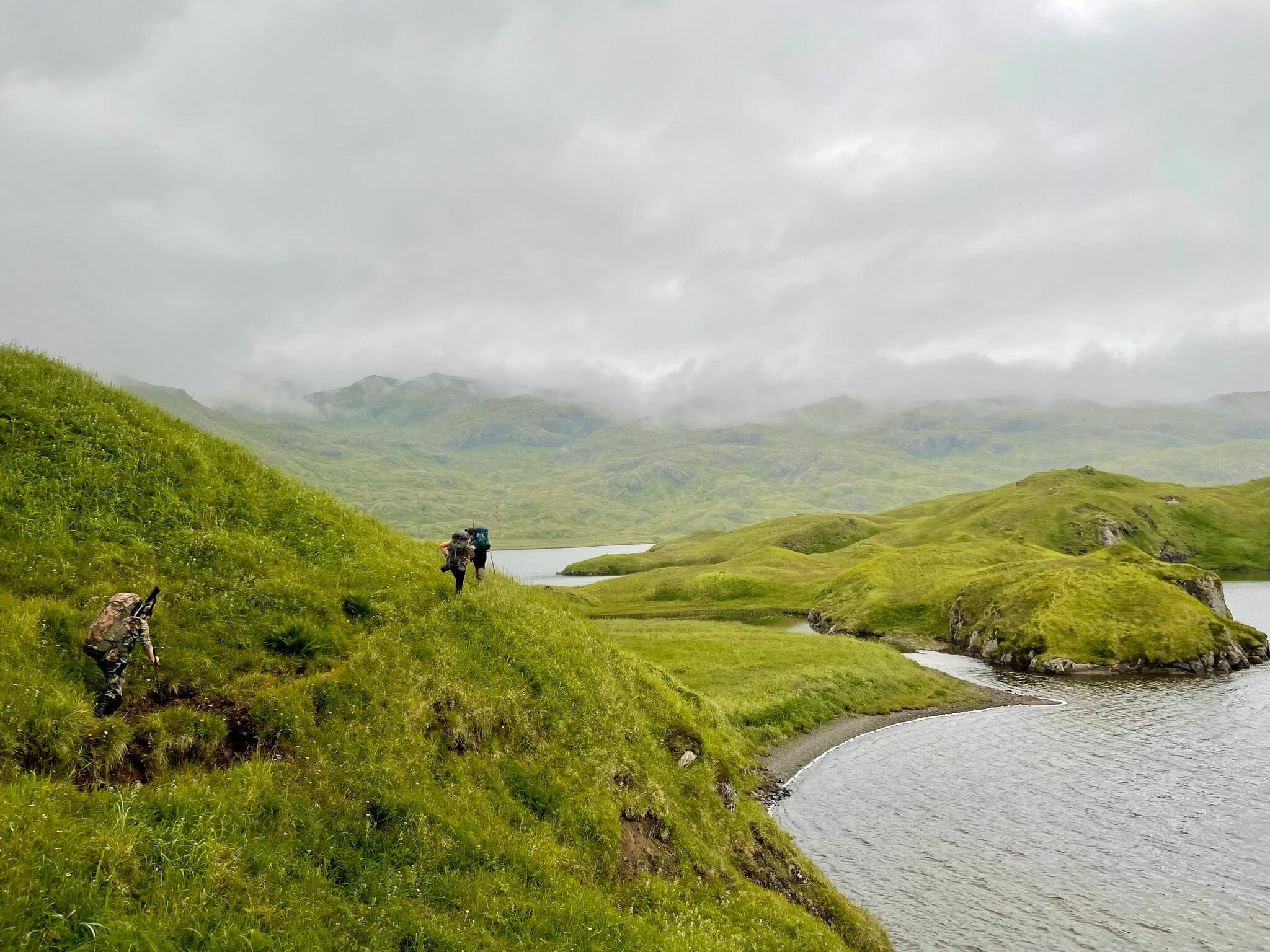If you board a jet in Anchorage, Alaska and fly southeast for three hours you can land in Seattle, Washington. Fly three hours southwest and you end up in Adak, a remote island in Alaska’s Aleutian chain. Adak is equidistant from Seattle and Tokyo. It is 274 square miles of treeless tundra that’s constantly battered by Bering Sea storms and populated year-round by just 300-plus hardy individuals. There are likely more abandoned buildings on the island than residents, remnants of a large military presence from World War II through the Cold War.
I visited Adak in search of caribou. My husband, three friends and I were on a mission to fill our freezers. I’ve spent a lifetime in Alaska, but this was my first visit to the Aleutians. I was thrilled to finally have a reason this beautiful, far-off corner of my home state.
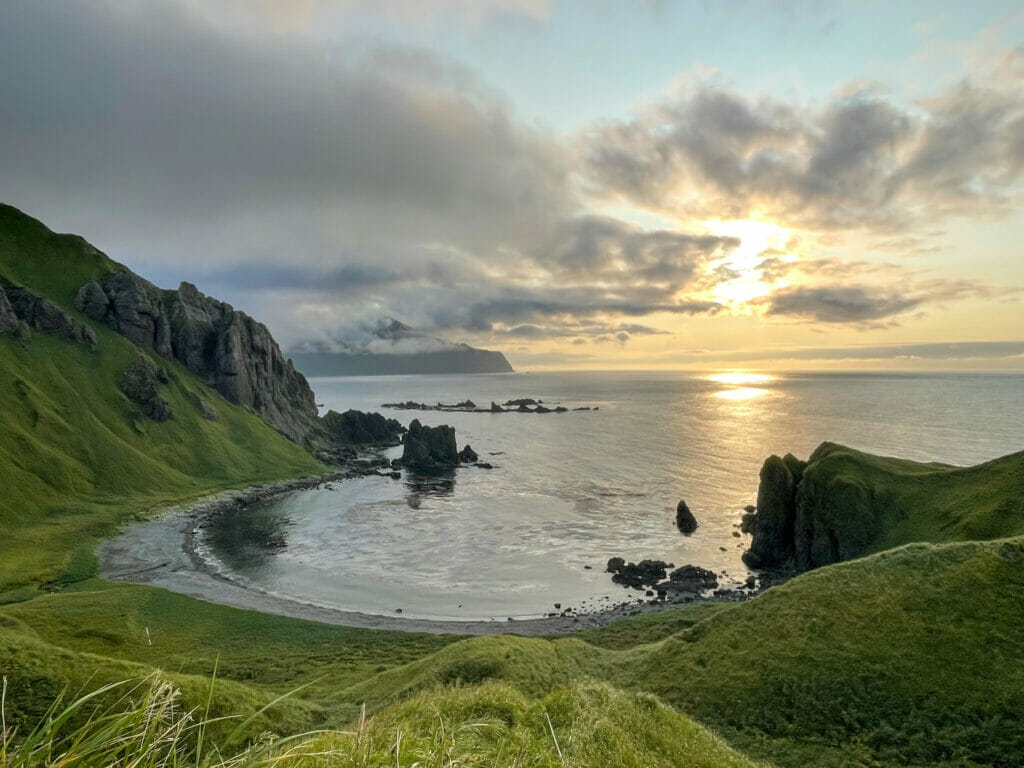
Fishing was not a priority on this trip, but in Alaska you never travel without your trusty fly rod. I knew we’d find some fish; pink salmon and Dolly Varden are known to be abundant in streams throughout the island. I didn’t think we’d find any of my favorite species though – rainbow trout.
Rainbow trout are native to a large swath of Alaska and Adak is only about 900 miles from the world-class trout fisheries of Bristol Bay, but there wasn’t much information available about their presence on the island. A U.S. Fish & Wildlife Service survey conducted in 1993 and 1994 found rainbow trout in just two streams of the 57 surveyed. I didn’t think we’d have time to visit these two particular streams. They weren’t close to the area we planned to hunt and we had to remain focused on our goal.
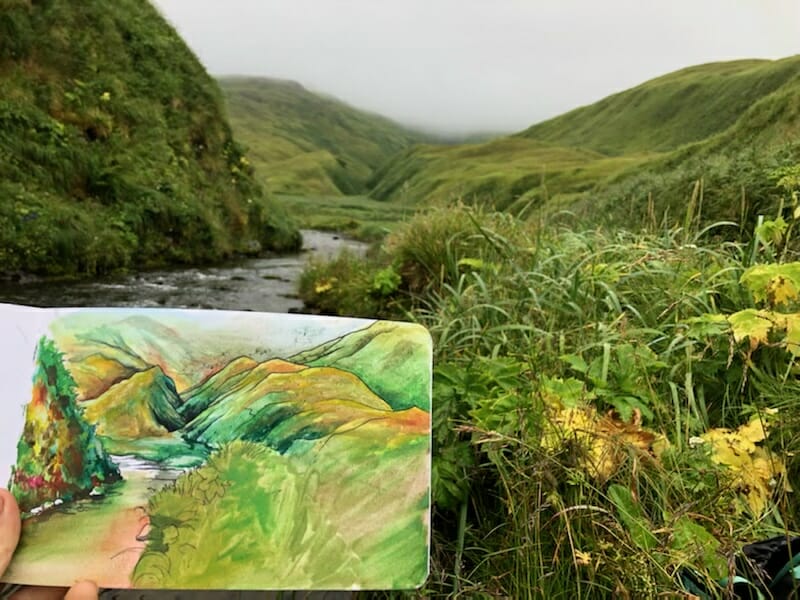
The start of our trip called for some of the turbulent weather Adak is known for. After a day of covering ground cloaked in a dense fog, with visibility being just 20 yards at times, we decided to ride out the weather the following day. Our plan was to spend a day getting gear prepped to depart on a multi-day excursion into the backcountry. Once those chores were done, we spent the rest of the day exploring the island and looking for fish.
The first location we visited did not prove productive. We could see fish, but 20-mile-per-hour winds obstructed any successful casting. Then we moved to a sheltered area on a different part of the island. We were immediately greeted by large pools of humpback salmon oscillating in the current.
As my friends set out to catch some salmon, I marched upstream and cast my line into the current. After a few drifts I hooked into a small but ambitious Dolly Varden. I caught several more Dollies as I worked the length of stream in front of me. The water was gin clear. I had a front row look into the watery home I was invading and could see each fish before I caught it.
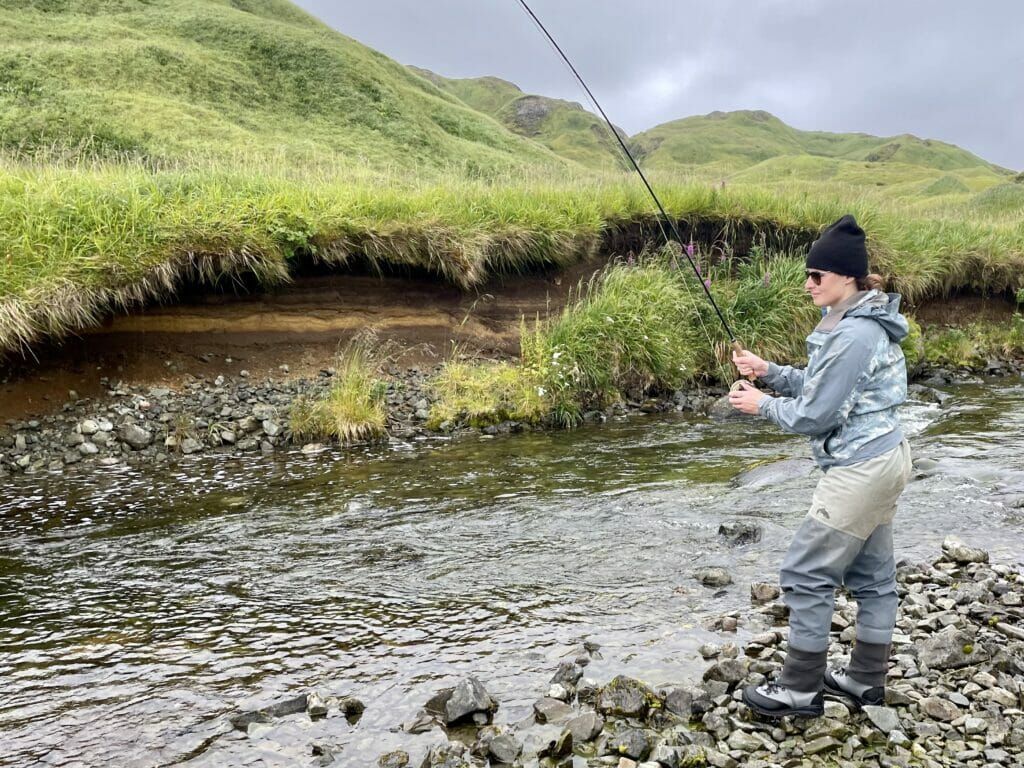
An hour passed amusingly. Eventually I hooked into something slightly stronger, slightly bigger. Once I brought it closer to shore, it was unmistakable: the olive skin, the leopard spots, a thin pink band down the side. This was a wild, Alaskan rainbow trout. I delighted in seeing an old friend in an unfamiliar place.
If I had caught this fish anywhere else it wouldn’t have been particularly remarkable, but this location made it special. I had caught trout in the stormy homelands of the Unangan people. I’m used to catching rainbows while surrounded by snow-covered mountains or dense boreal forest, not rolling green hills that look more like Ireland than the Alaska that I know. We hadn’t even found any caribou yet, and I thought of the trip as a success.
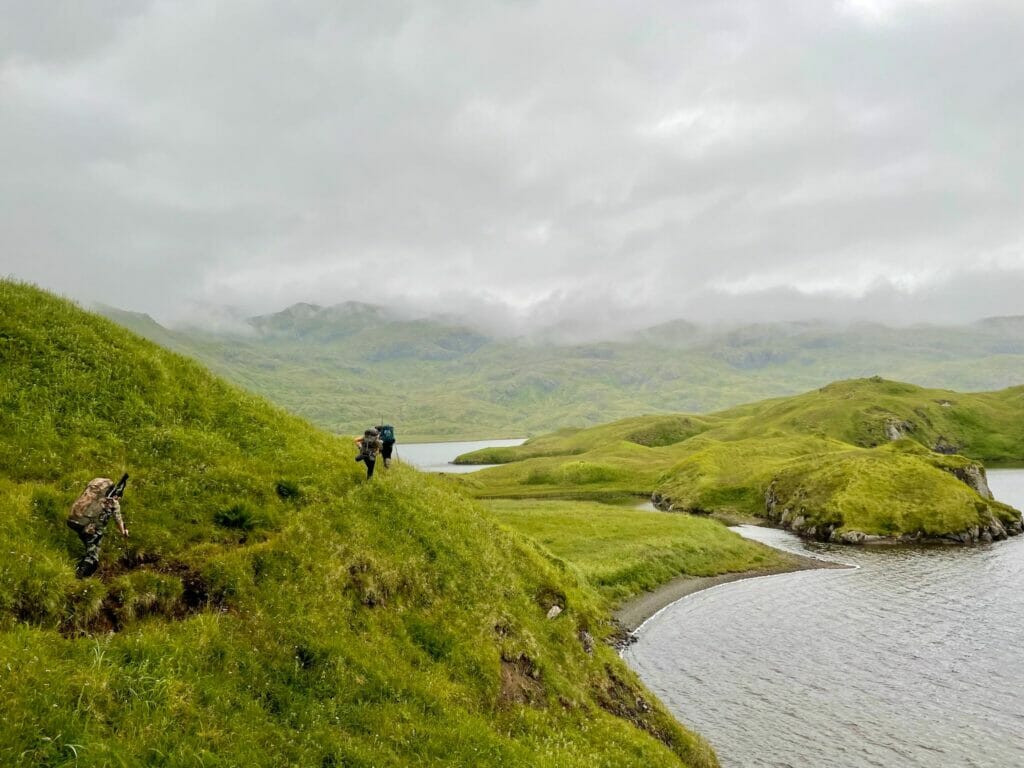
The day eventually ended and our focus returned. We set out on our hunt the next morning and returned three days later with a successful harvest of four caribou. The pack out was arduous. We trudged along endlessly rolling terrain, riddled with washed out holes hidden under high grasses, weighed down by heavy packs. As I tried to ignore my aching shoulders, the growing bruises on the front of my hips and my fatigued legs, I thought fondly of the fish I had caught just days earlier. I love to hunt. I enjoy the pursuit, the beautiful and wild places it takes me to and the grass-fed, organic and delicious meat it puts on my table. But, as with most things, I’d rather be fishing, especially if there’s rainbow trout involved.


